Cultivars
The most exciting thing that wine has going for it is it’s undeniable variability! This glorious aspect stems from three factors:
- There are numerous wine making styles available
- The influences of terroir
- Most importantly, there are different types of grapes (varietals) that each exhibit their own characteristics.
Vitis is the Genus that all grapes come from; that includes table grapes that are grown specifically for un-fermented consumption, and wine grapes. V. Vinifera is the specie that is most popularly used in wine making (the V. stands for Vitis). It is considered a European specie and in itself has hundreds of different grape varietals.
Other species include but are not limited to V. Labrusca, V. Riparia, V. Aestivalis, V. Rupestris, and V. Rotundifolia. These are all American species. Very little wine is made out of them, however they are mainly used as root stocks onto which V. Vinifera varieties are grafted as they are immune to the Phylloxera louse unlike their European cousins (topic for a later post).
Additionally, there are hybrid species that have cross pollinated naturally and by human intervention. I shall focus specifically on V. Vinifera below.
The diversification in specie and variety manifests in differing sizes of grapes, flavour profiles, size of bunches and leaves, thickness of skin, time to mature, acidity, tannins, sugar content and susceptiblity to diseases and drought. All these translate to variations in the end product.
The word Cultivar is derived from Cultivated Varietal.
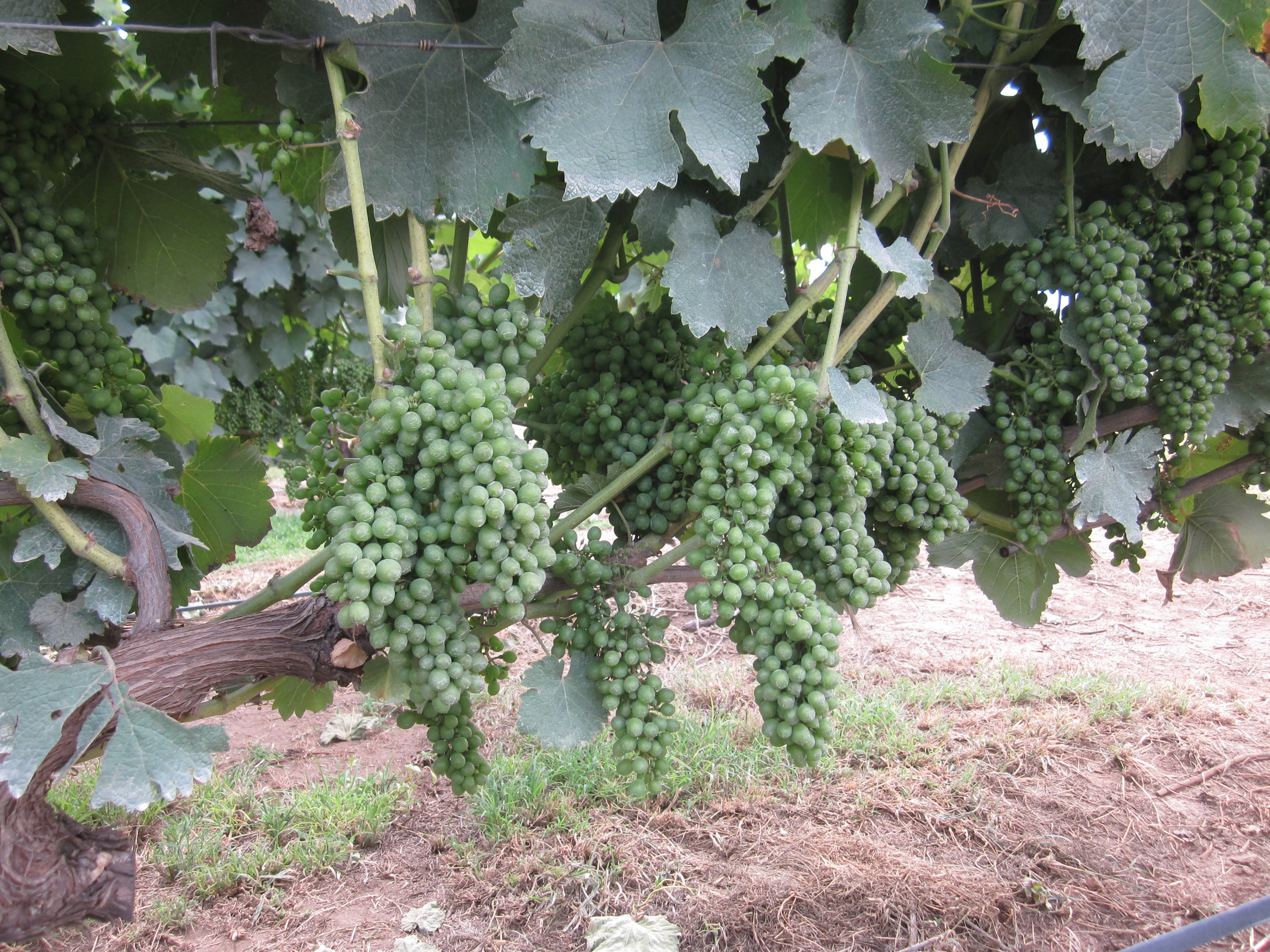
White wines are usually more accessible and soft than reds as they have less tannins. In the beginning I was exclusively on whites for this reason.
The major white varietals are :
- Sauvignon Blanc
- Chardonnay
- Chenin Blanc
- Colombar
- Muscat
- Riesling and
- Viognier.
The less well known whites are:
- Carignan Blanc
- Clariette Blanche
- Crouchen
- Gewurtztraminer
- Grenache Blanc
- Muscadelle
- Palomino
- Pinot Blanc
- Pinot Gris
- Roussanne
- Sémillon and
- Ugni Blanc
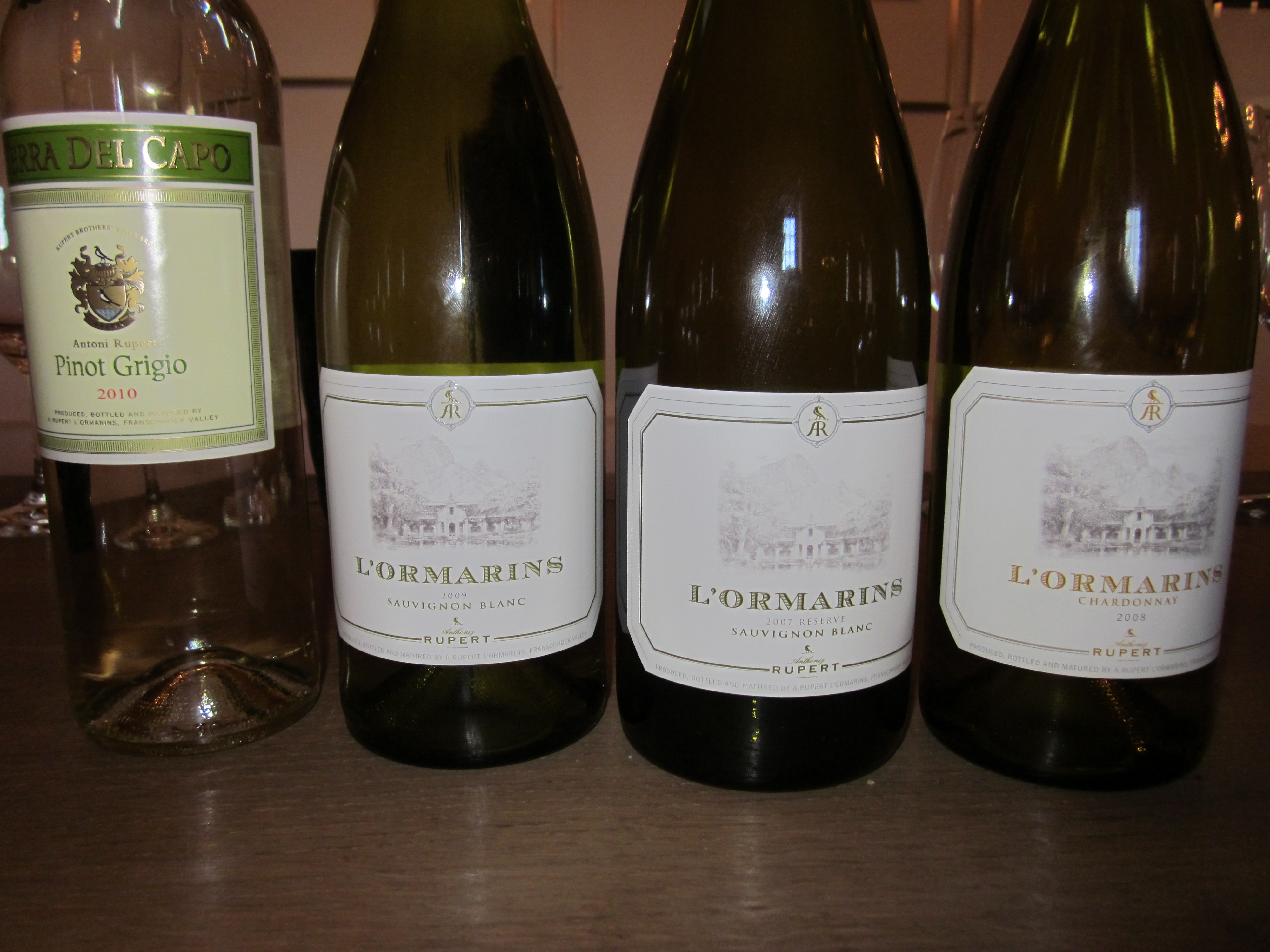
Different White Single Varietals from L’ Ormarins: Franschhoek, SA
- Cabernet Sauvignon
- Cabernet Franc
- Merlot
- Pinot Noir
- Petit Verdot
- Pinotage
- Shiraz/Syrah
- Sangiovese
- Tinta Barocca and
- Touriga Nacional.
- Babera
- Carignan
- Cinsaut/ Hermitage
- Malbec
- Mourvedre
- Nebbiolo
- Ruby Cabernet
- Tempranillo and
- Zinfandel
Where as having each grape varietal by it’s own accentuates the contrasting characteristics, a wine maker can blend two or more varieties to bring about an insane symphony of flavours. By law, a wine label must only have the name of a variety that consists more than 15% of the bottle content. This means that a number of the “Single Varietal” wines you have tasted before probably have been blends of some sort, however not significant.
Yours in wine…
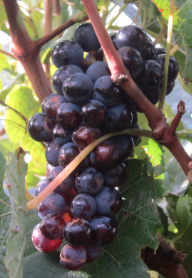
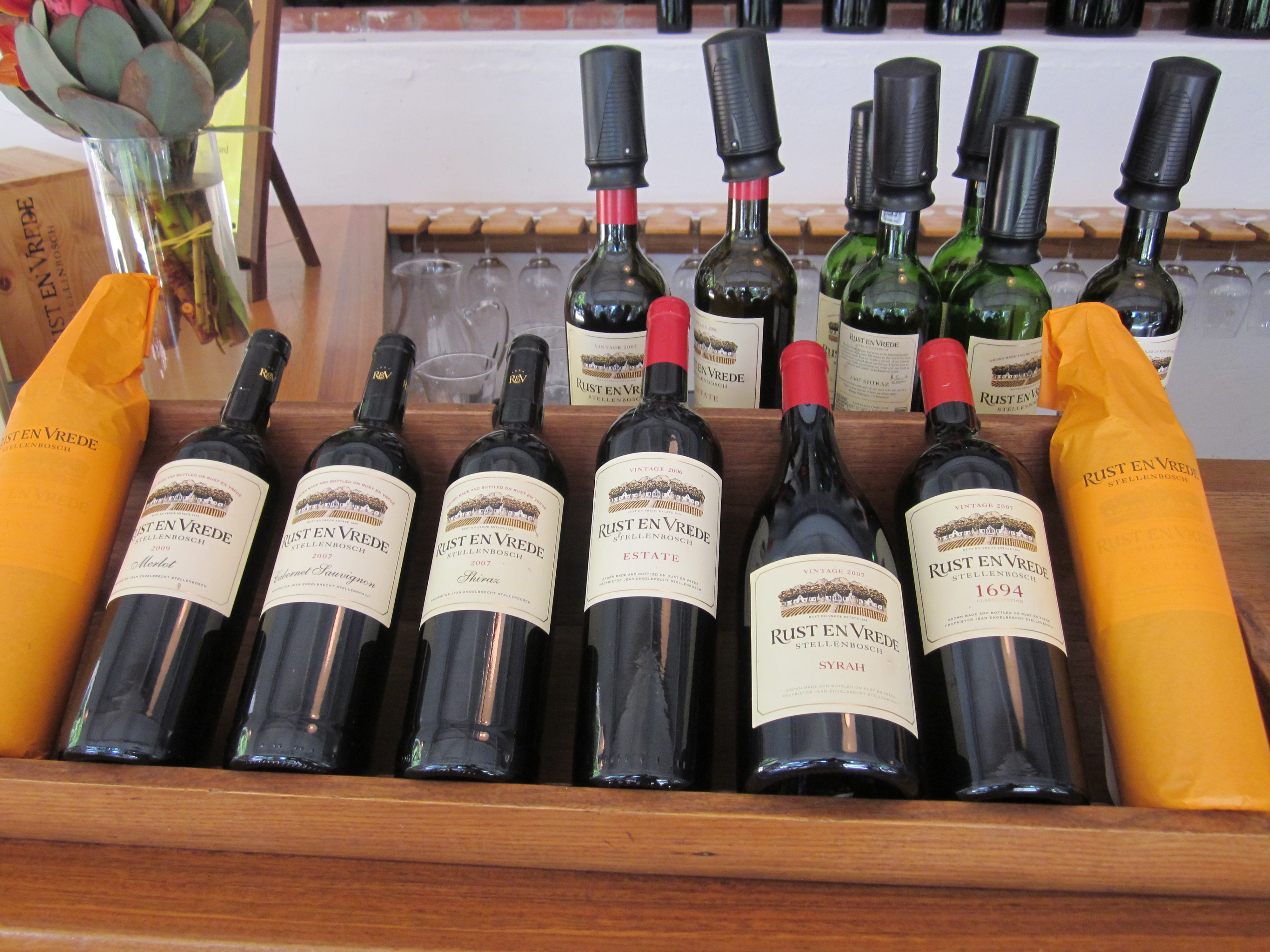
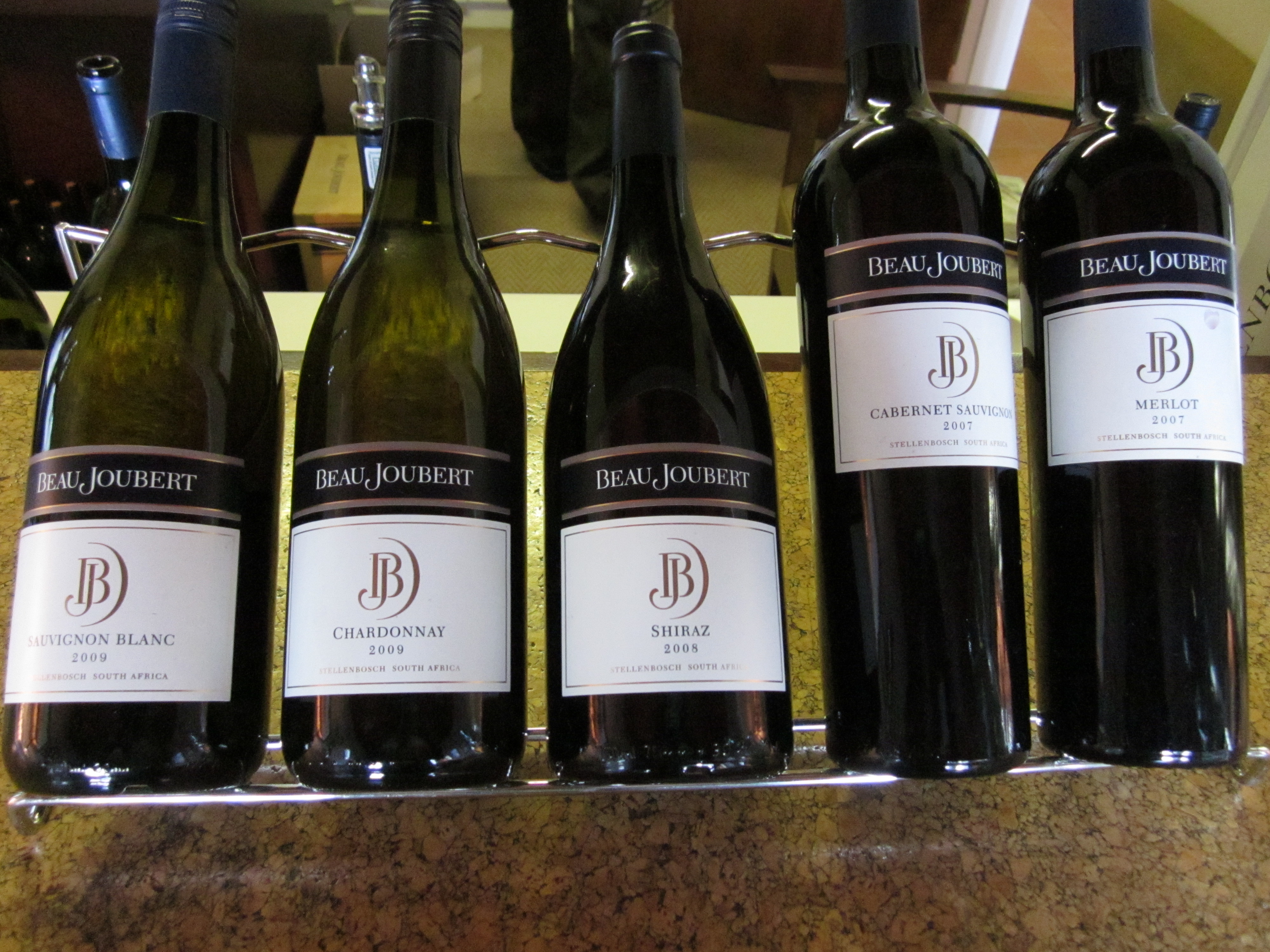


Hey Tom,
Great blog! Finally understand what the different names in the wine bottle mean! Small correction – it’s terroir (meaning ‘the land’)- not terrior. Looking forward to the next edition!
Thanks Ali! For the comment and the spelling correction. It’s impossible to pass anything by a Doc!